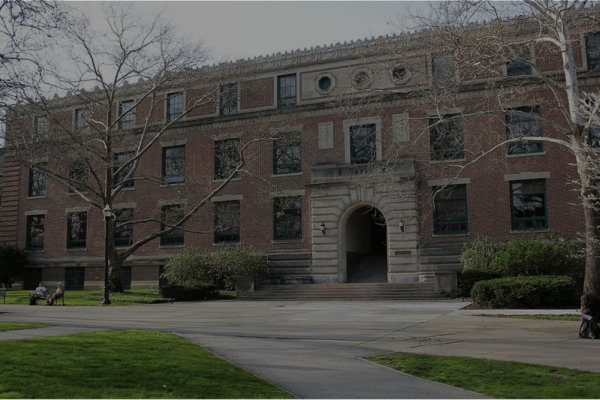
We are excited to announce the third meeting of the Moral Media working group. This year’s #moralmedia18 agenda features a combination of research presentations and problem solving sessions with the goal of sharing ideas and fostering concrete opportunities for collaboration. Researchers working in the area of media and morality (broadly defined) are encouraged to attend.
How to Register: email info@moralmedia.org. If you would like to present in the data blitz session (not mandatory for registration) please include: (a) the title of your talk and (b) a brief abstract for your presentation (250 words maximum). Proposals for the problem solving session are also welcome. Deadline: August 31, 2018
Twitter: #moralmedia18
Registration is free. Travel funding is not provided; although, breakfast and lunch are included as part of the conference.
Tentative Agenda
Friday, September 28
20:30: Drinks at Land Grant Brewing (Cash Bar, Ray Ray’s BBQ Food Truck)
Saturday, September 29
09:00 – 10:00: Arrive and Light Continental Breakfast
10:00 – 10:15: Opening Remarks Richard Huskey (The Ohio State University)
10:15 – 11:00: Opening Keynote – Matthew Grizzard (The Ohio State University)
11:00 – 12:00: Data Blitz One
12:00 – 13:30: Lunch
13:30 – 14:30: Data Blitz Two
14:30 – 16:00: Problem Solving Sessions – Includes Coffee
16:00 – 16:45: Closing Keynote – Mary Beth Oliver (Pennsylvania State University)
16:45 – 17:00: Closing Remarks – Matthew Grizzard (The Ohio State University)
19:00: Dinner TBD
Presentation Formats
Data Blitz:
These are brief (10-minute) talks followed by a short question and answer session. Speakers are encouraged to present empirical data although other topics will be considered.
Keynote Lectures:
Matthew Grizzard (The Ohio State University – Opening Keynote)
The Morality of Media Characters
Heroes, villains, anti-heroes, and other character archetypes seem to be a central determinant of viewer’s enjoyment of narratives. Over the last several years, research on different character archetypes within media narratives have garnered intense scrutiny by multiple scholars and labs. The current talk attempts to integrate the various contributions made by these independent scholars in order to elucidate pressing theoretical questions that could help advance and unite the distinct research paradigms of the various scholars in attendance.
Mary-Beth Oliver (Pennsylvania State University – Closing Keynote)
Developing a Media Inspiration Model
Research has demonstrated the possibility for media to inspire individuals, creating feelings of elevation and motivations for social good. However, not all individuals are inspired by media portrayals, and not all inspiring media may result in pro-social outcomes. This talk will overview the ongoing development of a model of media inspiration designed to provide a template of the important contextual features and boundary conditions regarding when media result in feelings of inspiration, and when feelings of inspiration result in pro-social outcomes.
Problem Solving Sessions
In these sessions, participants will collaboratively work together to address pressing issues related to media and morality. On completion of these working sessions, each group will have a tangible plan of action for conducting a collaborative research project. Coffee will be provided to help kick everyone’s creativity into overdrive.
Known Unknowns in Media and Morality (Grizzard):
Moral Foundations Theory (MFT) argues that the capacity for moral processing in humans is species-typical, although the way in which this moral processing occurs varies by culture (Haidt, 2009). Although MFT has proved to be fruitful in terms of generating research (for an overview see Clifford, Iyengar, Cabeza, & Sinnot-Armstrong, 2015), the primary measure of moral intuition salience–the moral foundations questionnaire (Graham et al., 2011)–is fraught with error. For example, the confirmatory factor analysis conducted in the original validation paper yielded a poor fit, and internal consistencies of the five subscales were marginal (average = .726; care = .69, fairness = .65, loyalty = .71, authority = .74, purity = .84 (see Graham et al., 2011). Subsequent uses of the scales have been consistent with a suboptimal measurement model and internal consistency (for examples, see Boyan et al.,2015; Grizzard, Tamborini, Lewis, Wang, & Prabhu, 2014; Tamborini et al., 2012), leading to calls by researchers for an improved measure of moral intuition salience.
In this breakout session, we propose: (1) a new procedure for characterizing individual differences in moral message processing, and (2) a multi-lab study for validating this procedure. The goal is to produce a rigorous and well-validated procedure across a diversity of samples and research teams.
Multi-Lab Replication Project (Huskey):
Details Forthcoming.
Support for #moralmedia18 is generously provided by the Ohio State University School of Communication.
